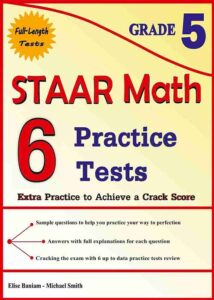
STAAR Practice Test
Understanding the STAAR Test
Hey everyone! Today, we will break down what the STAAR test is all about. STAAR stands for State of Texas Assessments of Academic Readiness, and it’s a big deal because it helps measure how much you’ve learned in your classes compared to the state standards.
Why Do We Have the STAAR Test?
– To Measure Learning: The STAAR test checks if you’re keeping up with the Texas Essential Knowledge and Skills (TEKS) curriculum — the extensive list of stuff you should know by the end of each grade.
– To Keep Schools Accountable: It also helps ensure schools teach you what you should know.
What’s on the Test?
– Who Takes It: All 3rd to 12th grade students take it, but the subjects you’re tested on will depend on your grade.
– Subjects Covered: You might face questions in math and reading every year, but tests on science, social studies, and writing pop up less often.
– Question Types: Expect primarily multiple-choice questions, but you might also have to write essays or answer open-ended questions depending on the test.
The STAAR Math test
It includes various mathematical topics appropriate for each grade, from basic operations in elementary to Algebra I in high school. The test format features multiple-choice and grid-in questions, where students enter their answers. Excelling in this test requires familiarity with grade-specific math concepts and practice with sample questions, which are available online to help students prepare and build confidence.
How Does It Work?
– When: STAAR tests are given in the spring, and sometimes there’s a second round in the summer if you need to retake a test.
– Where: You’ll take it at school, in a quiet room for test-taking.
Why Should You Care?
– Graduation: High schoolers need to pass tests in Algebra I, English I and II, Biology, and U.S. History to graduate.
– School Ratings: How well students do on the STAAR test helps determine ratings for schools and districts, so a lot is riding on these scores.
The Downsides
– Stress Factor: These tests can be stressful, which is a big concern for many students and parents.
– Teaching Styles: There’s also a worry that too much focus on these tests can lead teachers to “teach to the test,” which might mean you’re not getting the most decadent possible learning experience in class.
Recent Changes
With everything that’s been going on (like the COVID-19 pandemic), there have been some updates to the STAAR testing schedule and rules, including some leniency on the graduation test requirements for some students.
So, that’s the scoop on the STAAR test! It’s designed to help keep track of educational standards and ensure schools provide quality education, but it’s not without its controversies. Please ensure you’re prepared and take it seriously, but try not to stress too much about it.
Reference: Texas Education Agency








